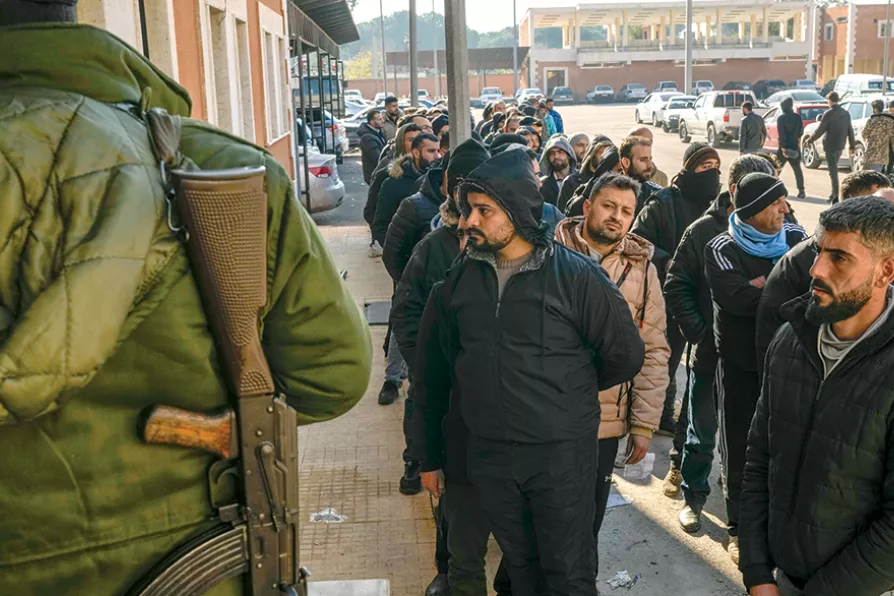As Palestine Action prisoners go weeks without food, alleging dangerous neglect and detention without trial, campaigners warn that a near-total media blackout is hiding a crisis that could turn fatal – and fuel a growing wave of public anger. ELIZABETH SHORT reports

 INTENTIONS ABOUT TO BE TESTED: Members from Bashar Assad’s Syrian army line up, yesterday, to register with Syrian rebels as part of a ‘identification and reconciliation process’ at a army base in Latakia, Syria
INTENTIONS ABOUT TO BE TESTED: Members from Bashar Assad’s Syrian army line up, yesterday, to register with Syrian rebels as part of a ‘identification and reconciliation process’ at a army base in Latakia, Syria
LIBERATION today reiterates its recent call that the future of Syria must be decided by the people of Syria alone and not by external forces with their own agenda for the country and its people.
The rapid advance of Hayat Tahrir al-Sham (HTS), as well as other armed factions, that led to the quick disintegration and fall of Bashar al-Assad’s husk of a government in Syria might have taken the world by surprise — but it should be viewed as part and parcel of a wider, long, and ongoing process to change the balance of forces in the Middle East.
By the point of the collapse of Assad’s government, Syria had essentially been divided into three zones after the civil war that began in 2011. Assad’s government was in control of only 65 per cent of the country’s sovereign territory.
It was supported chiefly by Russia and the Islamic Republic of Iran, which helped the government in Damascus to hold the territory under its control as well as repel attacks from various opposition militant groups.
The second zone, comprising 25 per cent of Syrian territory, is controlled by the largely Kurdish Syrian Democratic Forces (SDF) with the backing of the US.
The north-western regions of the country, including Idlib Governorate, are controlled by Hayat Tahrir al-Sham (HTS). This group emerged from the dissolved Jabhat al-Nusra, which was an Al-Qaida affiliate. The group’s leader Abu Mohammed al-Julani (Ahmed Hussein al-Sharaa), a longtime Jihadi militant, only renounced ties with Al-Qaida in 2016 — claiming he did so to deprive the West of reasons to attack his organisation.
While designated as a terrorist organisation by the UN, US, Russia and Turkey, HTS has nonetheless enjoyed continued covert backing from governments that were opposed to Assad — ironically including Turkey.
HTS has actively and extensively regrouped its forces over the past year, laying the ground for its recent offensive. This was boosted by a parallel attack led by another militant group, the Syrian National Army (SNA), backed by Turkey, which is based in the areas around the border between the two countries.
Immediately following the fall of Assad, Israel intensified its attacks on Syria, which had been taking place throughout the past year at a lower intensity.
Israel carried out around 500 aerial strikes in the 48 hours on December 10-11— more than the total it has carried out in the past year combined. Israel spuriously claims that this intensity is to ensure that Syrian arms and ammunition do not fall into the militants’ hands.
However, the objective of extremists in the Netanyahu regime to assert and project the notion of a Greater Israel, one whose strength and sphere of control extends well beyond its recognised international borders, is well-known — and the destabilisation and weakening of a neighbouring country like Syria serves only to further this malign aim.
During the HTS offensive towards Damascus, Israel also moved to occupy the UN buffer zone between the Golan Heights, which it illegally annexed from Syria in June 1967, and the rest of Syria’s sovereign territory.














